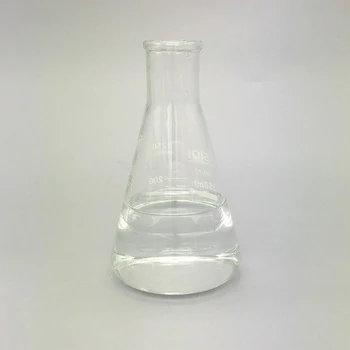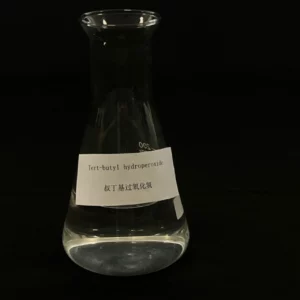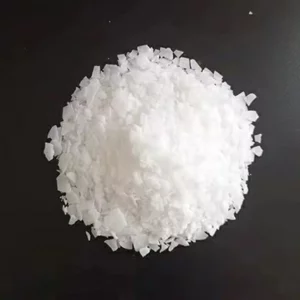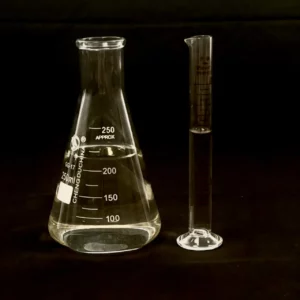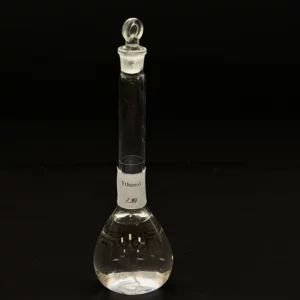چکیده
The global procurement of specialized chemical intermediates, such as trimethylchlorosilane (TMCS), necessitates a sophisticated evaluation framework for international buyers. This analysis delineates five fundamental pillars for selecting a proficient China Trimethylchlorosilane manufacturer in the 2025 چشم انداز بازار. The examination extends beyond rudimentary price comparisons to encompass a holistic assessment of product integrity, manufacturing robustness, و پیروی نظارتی. It investigates the critical nature of verifying purity specifications through documentation like Certificates of Analysis (خندق) and the strategic value of assessing a supplier’s production capacity and supply chain resilience, particularly for markets in South America, روسیه, آسیای جنوب شرقی, خاورمیانه, و آفریقای جنوبی. Further consideration is given to the complex web of international safety protocols and the indispensable role of responsive technical support. The objective is to equip procurement professionals with a nuanced understanding, enabling the formation of stable, value-driven partnerships with suppliers who demonstrate excellence across these multifaceted criteria, thereby ensuring both quality and supply security for this vital organosilicon compound.
غذای اصلی
- Rigorously verify product purity and consistency using a Certificate of Analysis (خندق).
- Evaluate a manufacturer’s production volume and logistical capabilities to ensure supply stability.
- Confirm the supplier’s adherence to international safety and hazardous material shipping regulations.
- Select a China Trimethylchlorosilane manufacturer that offers robust, پشتیبانی فنی زبان انگلیسی.
- هزینه کل مالکیت را تجزیه و تحلیل کنید, از جمله حمل و نقل و وظایف, نه فقط قیمت هر واحد.
- در مورد تجربه یک تأمین کننده حمل و نقل به بندر یا منطقه اقتصادی خاص خود سؤال کنید.
- شرکای خود را که شفافیت را در هر دو فرآیند قیمت گذاری و تولید نشان می دهند ، در اولویت قرار دهید.
فهرست مطالب
- عامل 1: تأیید کیفیت محصول, خلوص, و قوام
- عامل 2: ارزیابی ظرفیت تولید و مقاومت زنجیره تأمین
- عامل 3: پیمایش پروتکل های نظارتی و ایمنی
- عامل 4: ارزیابی کانال های پشتیبانی فنی و ارتباطی
- عامل 5: تجزیه و تحلیل مقرون به صرفه و شفافیت مالی
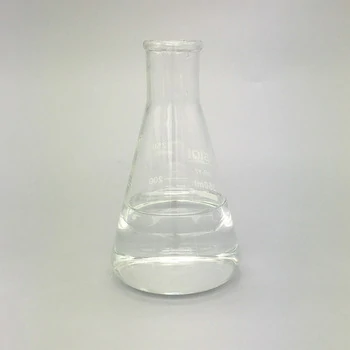
عامل 1: تأیید کیفیت محصول, خلوص, و قوام
انتخاب یک تأمین کننده شیمیایی را نمی توان به یک معامله صرف کاهش داد; این ایجاد اعتماد بنیادی به یکپارچگی مادی یک محصول است که باعث افزایش فرآیندهای تولید شما می شود. با یک ترکیب ارگانویلیکون مانند trimethylchlorosilane, ابزار آن با واکنش و خلوص آن ارتباط نزدیکی دارد, این اعتماد به بستر موفقیت عملیاتی شما تبدیل می شود. تفاوت بین یک سنتز موفق و یک دسته شکست خورده اغلب در قطعات در میلیون از ناخالصی غیب نهفته است. بنابراین, اولین و عمیق ترین تحقیق باید مربوط به کیفیت خود مواد باشد.
نقش بنیادی خلوص در برنامه های TMCS
تصور کنید که در حال ساختن یک مؤلفه الکترونیکی ظریف هستید. آیا از سیم کشی آلیاژ ناشناخته استفاده می کنید, یا اصرار دارید 99.99% مس خالص? منطق در شیمی یکسان است. تری متیل کلروسیلان, یا TMC, در درجه اول به عنوان یک عامل silylating استفاده می شود. در این نقش, به عنوان یک موقت عمل می کند “محافظ” برای برخی از مناطق واکنشی یک مولکول, مثل هیدروکسیل (-اوه) یا آمین (-NH2) گروه. این یک گروه Trimethylsilyl را به هم وصل می کند -(چرند)₃SI - شیمیدانان را برای انجام واکنش در سایر قسمت های مولکول بدون تداخل انجام می دهند. پس از اتمام واکنش های دیگر, این گروه محافظ به راحتی حذف می شود.
برای این روند بی عیب و نقص کار می کند, به خصوص در کاربردهای حساس مانند سنتز دارویی یا تولید الکترونیک با کارایی بالا, TMC ها باید فوق العاده خالص باشند. سطح خلوص 99.0% ممکن است برای تولید مایعات سیلیکونی فله یا درزگیر کافی باشد. با این حال, اسید هیدروکلریک باقیمانده (HCL), محصول جانبی متداول سنتز و هیدرولیز آن, یا سایر کلروسیلان, می تواند واکنشهای جانبی ناخواسته را در یک فرآیند دارویی چند مرحله ای آغاز کند, بازده ویرانگر و به خطر انداختن ایمنی محصول نهایی. خریدار که به دنبال آن است TMC های با خلوص بالا برای نیازهای خاص خود بنابراین باید درجه دقیق مورد نیاز را مشخص و تأیید کنید. یک تولید کننده Trimethylchlorosilane چین که شایسته مشارکت است نه تنها نمرات مختلفی را ارائه می دهد بلکه داده های شفاف را نیز برای اثبات ادعاهای کیفیت خود ارائه می دهد.
| درجه خلوص | ناخالصی های مشترک | برنامه های معمولی | چرا خلوص اهمیت دارد |
|---|---|---|---|
| درجه صنعتی (≥99.0٪) | دیکلروود متیل سیلان, HCL, متانول | تولید روغنهای سیلیکونی, رزین ها, و الاستومرها | مقرون به صرفه بودن مهم است; ناخالصی های جزئی تأثیر کم بر خواص پلیمری فله دارند. |
| درجه دارویی (99.8 ٪) | فلزات ردیابی, سایر ارگانوسیلان ها, حلالهای باقیمانده | ماده دارویی فعال (API) ترکیب, محافظت از گروه ها | از واکنش های جانبی جلوگیری می کند, ایمنی محصول نهایی را تضمین می کند, و استانداردهای نظارتی دقیق را رعایت می کند (به عنوان مثال, FDA, EMA). |
| درجه الکترونیکی (99.9 ٪) | یون های فلزی (سد, ک, Fe), ذرات, رطوبت | تولید نیمه هادی, اصلاح سطح ویفرها | ناخالصی های فلزی می تواند عملکرد نیمه هادی را مختل کند; رطوبت می تواند باعث نقص در سطوح میکروچیپ شود. |
رمزگشایی گواهی تجزیه و تحلیل (خندق)
گواهی تجزیه و تحلیل صرفاً یک تکه کاغذ نیست; این شهادت قسم دهنده یک تولید کننده در مورد یک دسته خاص از محصول است. یک خریدار صالح باید یاد بگیرد که آن را نه به عنوان لیستی از اعداد بلکه به عنوان روایتی از شخصیت محصول بخواند. هنگام ارزیابی COA برای Trimethylchlorosilane از یک تأمین کننده بالقوه, تمرکز شما باید پزشکی قانونی باشد.
اولی, به سنجش یا ارزش خلوص نگاه کنید. آیا به عنوان حداقل مقدار ارائه شده است (به عنوان مثال, “>99.5%”) یا یک اندازه گیری دقیق برای آن دسته خاص (به عنوان مثال, “99.72%”)? دومی اعتماد به نفس بیشتری را ارائه می دهد. طرف دیگر, لیست ناخالصی های مشخص شده را بررسی کنید. برای TMC, این باید شامل ترکیبات کلیدی مانند Dichlorodimethylsilane باشد ((چرند)₂sicl₂), methyltrichlorosilane (CH₃SiCl₃), and free hydrochloric acid (HCL). The manufacturer should provide precise limits for these and report the actual measured values, which should be well below the maximum allowable threshold. An absence of data on a critical impurity is as telling as a poor result. The CoA should also include the batch number, date of manufacture, and expiration date, linking the document irrevocably to the physical product you will receive.
The Importance of Sample Testing and Third-Party Verification
While a CoA is a declaration of quality, prudence demands verification. Before committing to a large-volume contract, requesting a sample is a standard and non-negotiable step in due diligence. A reputable China Trimethylchlorosilane manufacturer will readily provide a sample for your internal evaluation. این به آزمایشگاه کنترل کیفیت خود اجازه می دهد تا آزمایش های تأییدی را انجام دهید, مقایسه نتایج با COA تأمین کننده. این مرحله به دو هدف خدمت می کند: این کیفیت مواد را تأیید می کند و نگاهی اجمالی به قوام و صداقت سازنده ارائه می دهد.
برای اطمینان حتی بالاتر, به خصوص هنگام تهیه یک برنامه مهم, استفاده از یک مستقل را در نظر بگیرید, آزمایشگاه آزمایش شخص ثالث. ارسال نمونه از تأمین کننده بالقوه به یک آزمایشگاه معتبر در کشور خود یا یک بین المللی معتبر یک ارزیابی بی طرفانه ارائه می دهد. هزینه چنین آزمایشی در مقایسه با هزینه بالقوه حمل و نقل چند تنی آلوده است که می تواند خط تولید شما را متوقف کند یا منجر به فراخوان محصول شود.. It is an investment in certainty and a powerful negotiating tool.
عامل 2: ارزیابی ظرفیت تولید و مقاومت زنجیره تأمین
A supplier who can produce a perfect lab-scale sample is of little use if they cannot deliver ten metric tons on a reliable schedule. The second great pillar of supplier evaluation, therefore, is an assessment of their material capacity to produce and their logistical capacity to deliver. در 2025, with global supply chains still recalibrating from recent disruptions, this evaluation has taken on a new depth. It is no longer about finding the cheapest route but the most resilient one.
From Kilograms to Kilotons: Matching Production Scale to Your Needs
The chemical manufacturing landscape in China is vast and varied. It ranges from smaller, specialized firms that excel in producing niche, high-purity chemicals in smaller quantities to massive, integrated complexes that produce commodities on a staggering scale. When approaching a تولید کننده Trimethylchlorosilane چین چین, one of your first questions should concern their annual production capacity. A manufacturer like Hubei Bluesky New Material Inc., به عنوان مثال, reports the ability to deliver over 80,000 tons of silane agents to the global market, signaling a capacity for large-scale industrial supply.
Your own demand will dictate the appropriate partner. If you require a steady supply of 200 tons per month for your silicone production facility, you need a partner whose capacity far exceeds that number. This ensures that your orders do not represent their entire production capability, which would leave you vulnerable if they face any plant maintenance, raw material shortages, or receive a large order from another customer. برعکس, در صورت نیاز 500 کیلوگرم از یک درجه فوق العاده برای یک پروژه دارویی, کوچکتر, تولید کننده تخصصی تر ممکن است تمرکز و انعطاف پذیری بهتری داشته باشد. کل تولید سالانه TMC را از آنها بخواهید و در مورد استفاده از ظرفیت فعلی آنها سؤال کنید. یک کارخانه در حال اجرا در 95% ظرفیت انعطاف پذیری کمتری نسبت به یک کار دارد 70%.
هزارتوی تدارکات: حمل TMC به بازارهای جهانی
Trimethylchlorosilane به عنوان یک ماده خطرناک برای حمل و نقل طبقه بندی می شود (وت 1298). هر دو قابل اشتعال است (طبقه 3) و خورنده (طبقه 8). این طبقه بندی خطر دوگانه به این معنی است که حمل و نقل آن توسط مقررات سختگیرانه بین المللی اداره می شود, مانند کالاهای خطرناک دریایی بین المللی (IMDG) کد مربوط به حمل و نقل دریایی و مقررات کالاهای خطرناک IATA (دگرگونی) برای حمل و نقل هوایی.
یک تولید کننده صالح Trimethylchlorosilane چین باید یک متخصص در این هزارتوی باشد. They need a dedicated logistics team that understands the specific documentation, بسته بندی, and labeling requirements for your country. For a buyer in Brazil, the supplier must know how to navigate customs within the Mercosur bloc. For a customer in Russia, they must be familiar with the requirements of the Eurasian Economic Union (بی نظمی). For a partner in the Middle East, they must understand the protocols of major ports like Jebel Ali.
The choice of packaging is also a dialogue. TMCS is typically shipped in steel drums (به عنوان مثال, 200L) یا ظروف فله میانی (IBCC, به عنوان مثال, 1000L). The supplier must ensure these containers are UN-approved for the material and that they can be safely handled by your facilities upon arrival. Discussing these logistical details early reveals a supplier’s experience and preparedness for international trade.
| Target Region | Key Port Examples | Primary Logistical Challenge | Key Consideration |
|---|---|---|---|
| آمریکای جنوبی | Santos (برزیل), Buenos Aires (Argentina) | Complex customs procedures and potential for inland transit delays. | Supplier’s experience with Mercosur documentation and reliable local freight forwarders. |
| روسیه | St. Petersburg, Novorossiysk | Strict customs clearance, potential for weather-related port disruptions (ice). | Supplier’s familiarity with EAEU regulations and all-weather shipping routes. |
| آسیای جنوب شرقی | Singapore, Port Klang (Malaysia) | High humidity can affect packaging integrity; navigating diverse ASEAN trade rules. | Use of high-quality, corrosion-resistant drums; supplier’s knowledge of individual country import rules. |
| Middle East | جبل علی (UAE), Jeddah (Saudi Arabia) | Extreme heat during transport and storage; strict adherence to GCC standards. | Supplier’s use of temperature-controlled logistics if needed and familiarity with regional chemical standards. |
| آفریقای جنوبی | Durban, Cape Town | Long sea transit times; robust port security and handling protocols. | Durable packaging for long voyages; supplier’s relationship with major shipping lines serving African routes. |
Building a Resilient Supply Chain in 2025
Resilience is the ability of your supply chain to withstand shocks. When evaluating a supplier, you are evaluating a critical node in that chain. How do they build resilience? اولی, inquire about their raw material sourcing. Are they dependent on a single supplier for silicon metal or methyl chloride, or do they have multiple sources? A diversified raw material base protects them, and by extension you, from localized disruptions.
دوم, discuss lead times transparently. The total lead time includes production time, inland transport to the Chinese port, ocean freight transit time, and customs clearance at your end. A realistic and honest projection of this timeline from a supplier is a sign of a mature operator. They should also be able to discuss contingency plans. What happens if the port of Shanghai is congested? Do they have the option to ship from other ports like Qingdao or Ningbo? A manufacturer with a well-thought-out risk mitigation strategy is a far more valuable partner than one who only offers the lowest price on a sunny day.
عامل 3: پیمایش پروتکل های نظارتی و ایمنی
The chemical industry operates under a heavy mantle of public and governmental scrutiny. The responsibility for safe handling, transport, and use of hazardous materials like trimethylchlorosilane does not end at the factory gate; it extends across oceans and continents to your own facility. A partnership with a China Trimethylchlorosilane manufacturer must therefore be a partnership in compliance. Choosing a supplier who treats safety and regulation as a bureaucratic hurdle rather than a core ethical and operational principle is a grave error.
Understanding the Global Regulatory Landscape
While your primary concern is compliance with your own national and regional laws, your supplier must operate within a global framework. The Globally Harmonized System of Classification and Labelling of Chemicals (GHS) is a key example. It provides a universal standard for classifying chemical hazards and communicating them via labels and safety data sheets. A proficient supplier will have fully adopted GHS standards for all their export products.
For buyers in Europe or those who supply to European customers, the REACH (ثبت, ارزیابی, مجوز و محدودیت مواد شیمیایی) regulation is a major consideration. While your Chinese supplier is not directly obligated to register under REACH unless they have a legal entity in the EU, their awareness of it is a sign of their global sophistication. An experienced supplier will be able to provide the necessary data and support for you or your “Only Representative” in the EU to complete the registration. Inquiring about their experience with REACH-compliant customers can be a very effective way to gauge their regulatory maturity.
برگه اطلاعات ایمنی مواد (MSDS/SDS): Your Guide to Safe Handling
برگه داده ایمنی (SDS, formerly MSDS) is the single most important document for communicating the hazards of a chemical. It is a legal requirement, but it is also your primary guide for protecting your workers and the environment. When you receive an SDS for trimethylchlorosilane from a potential supplier, do not simply file it away. Scrutinize it with the same care you would a legal contract.
An SDS is typically a 16-section document. Pay close attention to Section 2 (شناسایی خطرات), which should clearly state that TMCS is a flammable liquid and vapor, causes severe skin burns and eye damage, and may cause respiratory irritation. Section 7 (حمل و نقل و انبار) should provide practical advice, such as keeping the material away from sources of ignition and moisture, and storing it in a well-ventilated area. Section 8 (Exposure Controls/Personal Protection) is vital, as it will specify the type of personal protective equipment (PPE) required, such as chemical-resistant gloves (به عنوان مثال, nitrile or neoprene), safety goggles and a face shield, و محافظت از تنفسی. A generic or poorly translated SDS is a significant red flag, suggesting a lack of attention to detail in a critical area.
On-Site Audits and Certifications
How can you be certain that the safety procedures described on paper are practiced on the factory floor? The most effective method is an on-site audit. While this may not be feasible for all buyers, it is the gold standard. If you or a representative can visit the manufacturing facility, you can observe their storage of raw materials, the condition of their reactors and distillation columns, their fire suppression systems, and the use of PPE by their workers.
In lieu of a personal visit, you can rely on internationally recognized certifications as a proxy for quality and safety management. The most common is ISO 9001, which relates to quality management systems. It indicates that the manufacturer has established and follows procedures to ensure consistent product quality. Perhaps even more telling for a chemical manufacturer is ISO 14001, which certifies their environmental management system, and ISO 45001, which covers occupational health and safety. A manufacturer who has invested the time and resources to achieve these certifications is demonstrating a public and verifiable commitment to responsible operations. A company that showcases its operational excellence, such as Zhejiang Sucon Silicone Co., Ltd., which is part of a major holding group, signals a level of investment and structure that often correlates with strong compliance systems.
عامل 4: ارزیابی کانال های پشتیبانی فنی و ارتباطی
In the global trade of specialty chemicals, the product itself is only part of the value proposition. The human element—the expertise, پاسخگویی, and clarity of communication from your supplier—can be just as valuable. When a technical problem arises in your process, or a logistical snag threatens your production schedule, the quality of your supplier’s customer and technical support is put to the test. Evaluating this human factor before you are in a crisis is a mark of a savvy procurement strategy.
Beyond the Sale: The Value of Expert Technical Guidance
Imagine your R&D team is developing a new process using trimethylchlorosilane and they encounter an unexpected byproduct. They suspect an interaction with a solvent under specific temperature conditions. Being able to contact your supplier and speak with a chemist who can discuss the reactivity of their specific grade of TMCS, provide data on its stability, or suggest potential purification methods is an enormous advantage.
This is the difference between a mere trader and a true manufacturing partner. A good China Trimethylchlorosilane manufacturer employs qualified chemists and chemical engineers who can support their products. Before committing, probe the depth of their technical team. Ask questions that go beyond a simple price quote. You might ask: “What is the typical water scavenger you would recommend for use with your TMCS in a moisture-sensitive reaction?” یا “Can you provide gas chromatography data showing the typical impurity profile of your 99.5% درجه?” The quality and confidence of their answers will reveal whether you are dealing with a sales office or a technically proficient organization. Companies in the chemical space, like those specializing in silane chemistry, often highlight their technical knowledge as a key differentiator.
Bridging the Language and Culture Gap
برای خریداران در آمریکای جنوبی, روسیه, یا خاورمیانه, effective communication with a Chinese supplier hinges on a shared language, which is most often English. A supplier’s commitment to serving international markets is immediately evident in the English proficiency of their sales and technical teams. Is their website and product literature professionally translated? When you send an email inquiry, do you receive a clear, well-written response, or something that requires deciphering?
Effective communication goes beyond language fluency. It also involves cultural understanding and business etiquette. A responsive supplier acknowledges receipt of your message promptly, even if a detailed answer will take time. They understand the urgency of international shipping schedules and provide proactive updates on the status of your order without you having to ask. Exploring a company’s background, like that of a firm with a dedicated international trade department, can give you confidence in their ability to manage cross-cultural business relationships effectively. A company that has built its reputation on serving global clients will have refined these communication processes.
Responsiveness and Problem Resolution
The true test of a supplier relationship comes not when things go right, but when they go wrong. A shipment might be delayed by a customs inspection, a drum might be damaged in transit, or an off-spec batch might (in a rare instance) be delivered. How a supplier handles these problems is a powerful indicator of their character.
You can gauge this proactively. During your initial negotiations, note how quickly they respond to your emails and phone calls. بوها 24-48 hour response time for non-urgent matters is a reasonable benchmark for international communication. Ask them directly about their process for handling customer complaints or technical issues. “What is your procedure if we find the material does not meet the specifications on the CoA?” A good supplier will have a clear, structured process for investigating the claim, which may involve analyzing retained samples from the batch, arranging for return or replacement of the material, and issuing a corrective action report to prevent recurrence. A vague or dismissive answer to this question should be considered a serious warning.
عامل 5: تجزیه و تحلیل مقرون به صرفه و شفافیت مالی
The final pillar of evaluation, and for many the most pressing, is cost. تا کنون, a sophisticated buyer understands that the price per kilogram is but one variable in a much larger equation. The pursuit of the absolute lowest price can often lead to higher total costs through poor quality, supply disruptions, or hidden fees. A more robust approach is to analyze the total cost-effectiveness of the partnership, which requires a deep dive into pricing structures, shipping terms, and financial transparency.
کل هزینه مالکیت (TCO) Equation
The quoted price for trimethylchlorosilane is merely the starting point. کل هزینه مالکیت (TCO) provides a more complete financial picture. The basic formula to consider is:
TCO = (Unit Price × Volume) + Freight Costs + بیمه + تعرفه ها & وظایف + Local Handling Costs + هزینه کیفیت پایین
A supplier might offer a price that is 5% lower than a competitor’s. با این حال, if their chosen shipping line is slower, costing you a week of production time, or if their packaging is less robust, leading to a 1% product loss during transit, their initial price advantage evaporates. When you request a quote, ask for a detailed breakdown. A transparent China Trimethylchlorosilane manufacturer will be able to provide you with not just the product price but also estimated costs for shipping to your designated port, and they will clearly state what the price includes. Thinking about the entire supply chain, from the factory in provinces like Zhejiang or Guangdong to your own facility, is essential.
Demystifying Incoterms and Payment Structures
The language of international trade is spoken through Incoterms, a set of three-letter codes published by the International Chamber of Commerce. These terms define the responsibilities of the seller and buyer for the shipment of goods. Understanding them is not optional.
- اگزو (سابق آثار): The seller makes the goods available at their premises. شما, خریدار, are responsible for all transport costs and risks from their factory door. This often seems cheapest but places the entire logistical burden on you.
- قصبه (رایگان در هیئت مدیره): The seller is responsible for getting the goods loaded onto the vessel at the designated Chinese port. You are responsible from that point forward, including the ocean freight and insurance. This is a very common and balanced term.
- سیف (هزینه, بیمه, و بار): The seller pays for the cost of the goods, the ocean freight to your destination port, and a minimum level of insurance. Your responsibility begins when the goods arrive at your port. This is convenient but may be more expensive than arranging your own freight.
A reputable supplier will be able to quote you prices based on different Incoterms, allowing you to compare and choose the most cost-effective option for your business. به همین ترتیب, they should offer flexible and secure payment terms. While a full advance payment via Telegraphic Transfer (t/t) may be requested for a first order, an established partner might offer terms like 30% T/T in advance and the 70% balance against a copy of the Bill of Lading, or even a Letter of Credit (L/C) for large, ongoing contracts. A refusal to discuss terms beyond 100% advance payment can be a sign of financial instability or a lack of trust in the trading relationship.
Identifying a Partner for Long-Term Value
Ultimately, the goal is not to execute a single, cheap transaction but to build a resilient, long-term supply partnership. A supplier who understands your business, anticipates your needs, and works with you to manage costs and risks over time is an asset. This kind of partnership is built on transparency. When you are looking for a reliable chemical supplier, you are looking for a company that is open about its processes.
Does the supplier provide insight into market price fluctuations for raw materials like silicon, helping you to forecast future costs? Are they willing to discuss long-term contracts that might lock in favorable pricing in exchange for committed volume? The search for a China Trimethylchlorosilane manufacturer is a search for a partner who contributes to your stability and profitability. The lowest price today may come from a supplier who will be gone tomorrow. The best value comes from a supplier who invests in quality, ایمنی, and the relationship, ensuring a steady and reliable flow of this critical chemical for years to come.
سوالات متداول (سوالات متداول)
What is the typical lead time for an order from a China Trimethylchlorosilane manufacturer?
Lead time is composed of production time and shipping time. Production can take 1-3 هفته ها, depending on order size and the manufacturer’s schedule. Sea freight transit time varies significantly by destination: 2-3 هفته ها به آسیای جنوب شرقی, 4-5 weeks to the Middle East, 5-7 weeks to South America or South Africa, and can be longer for Russia depending on the port. A reasonable total lead time to plan for is typically 6-10 weeks from order confirmation to arrival at your port.
How is Trimethylchlorosilane packaged and shipped internationally?
Due to its hazardous nature (flammable and corrosive), TMCS is shipped in UN-approved containers. The most common packaging formats are 200-liter coated steel drums or 1000-liter Intermediate Bulk Containers (IBCC). These are then loaded into standard shipping containers for sea freight, with proper hazardous material placarding and documentation in compliance with the IMDG Code.
Can I get a sample of TMCS before placing a bulk order?
بله, any reputable manufacturer will provide a sample for your evaluation. Typically, they will offer a small quantity (به عنوان مثال, 250ml to 1 لیتر) and may charge for the air freight cost due to its classification as dangerous goods for air transport, which requires special packaging and handling.
What documents should I expect from a reputable TMCS supplier?
For every shipment, you should expect a comprehensive set of documents including a Commercial Invoice, یک لیست بسته بندی دقیق, the original Bill of Lading (or Telex Release), a Certificate of Analysis (خندق) specific to the batch being shipped, and a Material Safety Data Sheet (SDS).
Why is there a price difference between various Chinese suppliers?
Price variations can be attributed to several factors: the purity grade of the TMCS, the scale of the manufacturer (larger producers may have better economies of scale), the quality of their raw materials, their investment in safety and environmental compliance, and the level of customer and technical support they provide. A significantly lower price can sometimes be a red flag for compromised quality or service.
Is it safe to import TMCS?
بله, it is safe when handled in accordance with international regulations and best practices. The key is to partner with an experienced manufacturer who understands hazardous material packaging and shipping protocols, and to ensure your own facility is equipped with the proper storage, handling equipment, and personal protective equipment as outlined in the Safety Data Sheet.
What are the main applications of high-purity TMCS?
High-purity (99.8 ٪) trimethylchlorosilane is essential in applications where even trace impurities can cause problems. Its primary uses are in the pharmaceutical industry as a protecting agent during the synthesis of complex molecules, and in the electronics industry for surface treatments and the manufacturing of high-performance silicones.
پایان
Bringing our examination to a close, the process of selecting a China Trimethylchlorosilane manufacturer in 2025 reveals itself to be an exercise in strategic foresight. It demands a perspective that transcends the immediate appeal of a low price-per-ton and embraces a more holistic, capabilities-based assessment. The five pillars—product quality verification, supply chain resilience, regulatory discipline, technical support, and true cost-effectiveness—are not independent checklists but interconnected facets of a single, crucial question: Is this supplier a reliable partner for my enterprise? A discerning buyer must act as a chemist in scrutinizing the CoA, a logistician in mapping the supply route, a regulator in demanding safety compliance, and a business strategist in building a relationship. By diligently investigating each of these areas, you move beyond the role of a simple customer to become an informed partner, securing not just a chemical, but a cornerstone of your production process from a manufacturer capable of delivering consistent quality and unwavering support to any corner of the global market.

